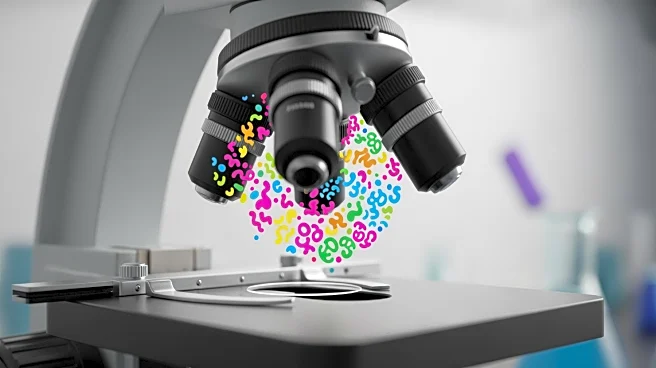What's Happening?
Recent advancements in spatial biology techniques have provided new insights into the complex tissue microenvironment of Crohn's fistulae. Researchers utilized spatial transcriptomics (ST) and iPEX, a micrometre-resolution
deep spatial proteomics method, to generate a spatially resolved expression atlas of intestinal fistulae. This study involved 92 individuals and compared various types of intestinal fistulae with control tissues. The findings highlighted the localization of fibroblast activation syndrome (FAS) cells at the fistula edge and identified gene zonation patterns not previously included in in situ target panels. The study also explored ECM-related gene expression patterns, revealing the involvement of developmental pathways in aberrant tissue morphogenesis. These techniques are crucial for understanding the spatial distribution of genes and proteins within tissues, which is essential for advancing human health and disease research.
Why It's Important?
The application of spatial biology techniques in understanding Crohn's fistulae is significant for several reasons. Firstly, it provides a detailed map of gene and protein distribution within affected tissues, offering insights into the underlying mechanisms of disease progression. This can lead to more targeted therapeutic strategies and improve patient outcomes. Secondly, the ability to analyze tissue at a micrometre resolution allows for the identification of specific cell types and their roles in disease, which is crucial for developing personalized medicine approaches. The study's findings on fibroblast activation and ECM-related gene expression patterns could pave the way for new treatments targeting these pathways. Overall, these techniques enhance our understanding of complex diseases like Crohn's and have the potential to transform research and treatment in the field of gastroenterology.
What's Next?
The study suggests several areas for future research, including the exploration of dysregulated developmental cues shaping fistula biology. Researchers may focus on the role of specific genes and proteins in tissue morphogenesis and their potential as therapeutic targets. Additionally, the integration of spatial biology techniques with other omics approaches could provide a more comprehensive understanding of Crohn's disease and its complications. As these techniques become more refined, they may be applied to other complex diseases, further advancing the field of spatial biology and its applications in medicine.
Beyond the Headlines
The ethical implications of using advanced spatial biology techniques in research should be considered, particularly in terms of patient consent and data privacy. As these methods become more widespread, researchers must ensure that ethical standards are maintained and that patient data is handled responsibly. Additionally, the cultural impact of these advancements should be acknowledged, as they may change perceptions of disease management and treatment options.











